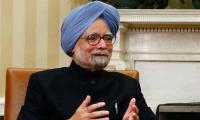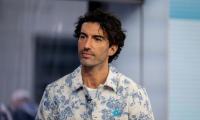Stars and Birds: Last week, our group of university students walked towards Nasir Bagh as the first stop in our tour of Mall Road. As I took a look around the street, the sculpture that caught my attention was that of a star cocooned by a massive crescent. The waning crescent carrying the star is supposed to reflect our Pakistani identity and the artist who created the sculpture (Atif Khan) also said so on his Instagram.
Henri Lefebvre, a French Sociologist, is famous for his theory of a ‘Spatial Triad’. He muses that the ‘lived’ or ‘representational’ reality of our spaces carries our symbols, memories, and ideologies. The Istanbul Chowk, where the sculpture created out of birdhouses stands tall, makes a beautiful example. Some say that the birdhouses were added as a make-shift compensation after all the deforestation and urbanisation, but I thought the idea was beautiful: an apology to the birds.
In a way, the birdhouses become a metaphor for many other places around Mall Road. The Pak Tea House, for example, is no longer what it used to be. Rather, the intellectuals who blew life into it (Faiz Ahmed Faiz, Saadat Hasan Manto, Josh Malihabadi, Sahir Ludhianvi, and Ismat Chughtai, among others) have almost all passed or moved away. But the structure has been preserved and exists as a haven, for some ‘birds’ who may still find their way towards it. The portraits on its walls have become a testament to the ‘lived reality’ of space.
Narratives through names: The names given to these spaces also carry stories. Istanbul Chowk, for instance, was initially known as the Patras Bukhari Chowk. Later, it was renamed to symbolize the Pak-Turk friendship. The Band Stand Garden, named after the leisurely activities of the colonizers, transitioned into the ‘Nasir Bagh’ as a tribute to the second president of Egypt, Jamal Abdul Nasir.
Besides names, architecture itself is often used to pay tributes. If you look closely, the pillars of the General Post Office (GPO) are shaped like the crown of Queen Victoria. While her statute has been removed from the public view to the insides of Lahore Museum, the structure of GPO still pays a bittersweet tribute to her. It was built with the intention of appeasing her, and there is something very stagnant and almost frightening about that realization.
Statue Stories: Dr. Samuel Burgum, an urban sociologist, says that all archives share a claim to authority. I would think that the same is true for the perceived reality of the spaces on Mall Road, particularly the statues. Out of 12 original statues that used to be here, only one is intact - of Sir Alfred Woolner, who was a Sanskrit professor. If you’re an imaginative person touching the bronze statute, you cannot help but think of the hands that perfected it. It is interesting how when we talk of the person who ‘built’ the statue, we refer to the person who commissioned it instead of the labour that spent hours defining the little details-Sir Alfred Woolner’s majestic robes and boots, among them.
It is difficult not to recall Sahir Ludhianvi’s ‘Taj Mahal’ at this juncture. Towards the beginning, he wonders, “bazam shahi min ghareebon ka guzar kiya mani” (What is the meaning of the poor in Bazam Shahi?). We continue to dwell and marvel at the various ‘bazm-e-shahis’ today. The same is true for the GPO, where the Queen’s crown is commemorated with brickwork. Standing there, one wonders.
Was the Space Ever Meant for Us?: Lahore not only becomes an archive of colonial imagination but also appears as a palimpsest on which new meaning has been superimposed over time. Even the former Mayo College of Industrial Arts was not the artistic, tumblr-isque place that the National College of Arts (NCA) is today. The British efforts to ‘educate’ with certain skills were not exercises in charity. Rather, it was an effort to develop a new working class.
From this lens, the cluster of educational institutions on Mall Road were perhaps also attempts at ‘civilization’ of the masses that would make them more open to British values and ideologies. It benefitted the colonisers to create a new educated class fitting into the political and economic order. Education and marketplaces both became tools of governmentality, or what Foucault calls capillary forms of government.
Likewise, many structures housed by the Mall were meant to visually project power, efficiency, and authority. The wide, orderly streets of the Mall especially emerge in a stark contrast to the Walled City. While Walled City has interconnectivity and intimacy to it, Mall Road contains spaced-out colonial structures that are a sight for the eyes but are less inviting or personal.
At the same time, the spaces on Mall Road are a testament to the interactions between the locals and the colonial rulers. YMCA and Pak Tea House emerge as spaces of interaction where people who were keen on seeking knowledge and skills conversed. However, the spaces where education and conversation are possible also become the places where resistance and imperialism can grow. The irony lies in how these ‘civilising’ spaces, schools, markets, and cafes – created opportunities for cross-cultural encounters and exchanges of ideas that went beyond the intentions of the colonial rulers.
Reimagining the past: Today, the very presence of these buildings evokes memories of the past but also shows how a post-colonial society can repurpose and reinterpret these spaces for its own needs. For example, the YMCA now hosts a variety of activities, offering courses in crafts, beauty, language, and fashion design, while also holding art exhibitions. The GPO can be seen as a “watchtower” of colonial power, but now it functions more as a public service space, unaware of its history. Similarly, the wide, orderly streets on Mall Road have become an outlet for protests and parades.
We happened to end our visit with ‘Amratsari dahi ballay’. The story is that the business was started by Muhammad Siddique in 1948 after he migrated to Pakistan. He had run a shop for six years before the partition and continued it afterwards. Like birdhouses on Istanbul Chowk, I think the name of the business is an apt reminder of the ‘lived reality’ of Lahore. As I took a final look at Mall Road, the intertwining layers of history and modernity became clearer. At its core, Mall Road feels like an artist’s canvas where colours of the past bleed into today’s hues; who knows what it will create next?
The writer is the CEO of the Pakistan Business Council.
The writer is a final year law student at LUMS. When not studying constitutional and criminal law, she loves to muse over history and culture.
MPAs ask for their salaries and benefits to be at par with high court judges and exempt from tax
This system fosters and places premium on VIPs, facilitating VIP culture, which is alive and kicking
Imagine this waste covering over 15,500 cricket stadiums, piled three meters deep every year
If there is one thing that can be gleaned from politics today, it is that we no longer speak same language
Postman argues that “typographic mind” was yielding to “televisual mind”
Pakistan is well poised to meet opportunities that Artificial Intelligence will offer for developments in industries







